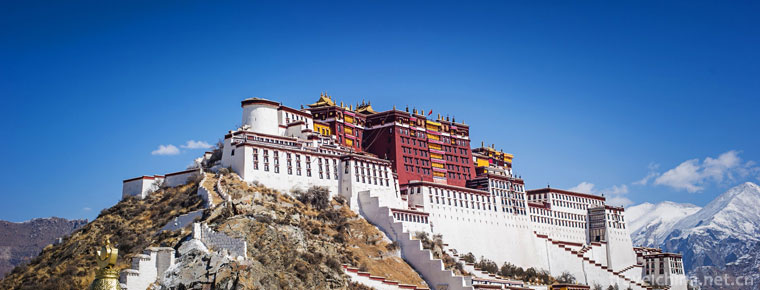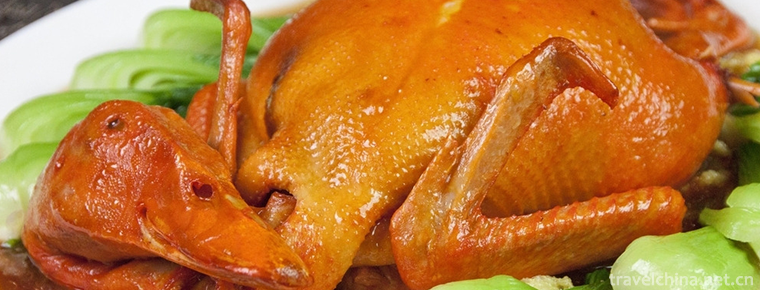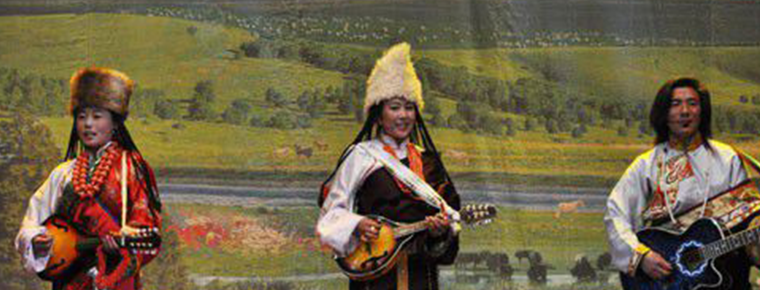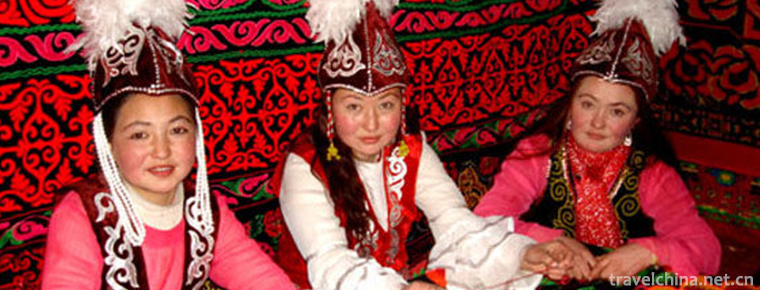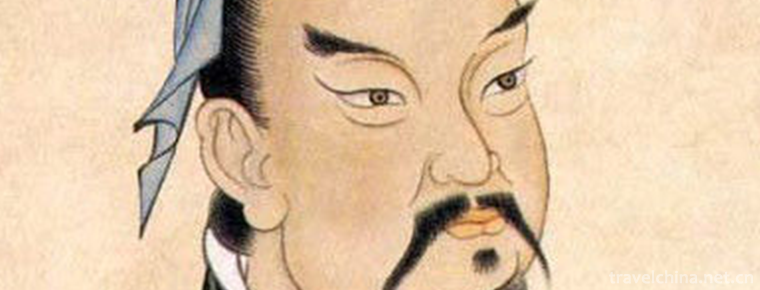Polo
Polo
Polo refers to a sport in which horses are riding and polo clubs are used to hit the ball. In ancient China, Polo was called "hitting the bow". It was invented in the Han Dynasty and flourished in the Tang and Song Dynasties. In the late Eastern Han Dynasty, Cao Zhi's "Famous Capital Chapter", there were poems about "hitting the bow by riding, nimble and nimble" to describe the situation of people playing polo at that time.
Polo was prevalent in the Tang, Song and Yuan Dynasties, and was mainly prevalent in the army and the royal nobility from the beginning of the Qing Dynasty. At present, there is no exact explanation about the origin of polo in the world. However, according to the historical records of our country's literature, polo in China should belong to the local sport, not from abroad. On June 7, 2008, Polo was approved by the State Council to be included in the second batch of national intangible cultural heritage list.
origin
The horse's carpet is a sport that rides on a horse and hits it with a stick, so it is also called "hitting the carpet", "hitting the carpet", "hitting the bow" and so on. The sport of horseback riding and bowling was introduced from Tibet in the Tang Dynasty. Because the classification of ancient sports is not detailed, and the above mentioned "General Examination of Documents" and "Integration of Ancient and Modern Books" classify Ma Ju into the "Cuju" department, which makes the distinction between the two more complex. The ball shape used by the horse is as small as a fist. It is made of light and tough wood. It is hollowed out in the middle and painted with various colors on the outside. It is also a little carved. It is called "colorful marble", "seven treasure marble" and so on. Cuju uses the ball "skin for it, medium solid for hair", and foot kick, and different from the origin of horseshoe. The bigger difference is that the horse is beaten with a cane and the foot is kicked. Horse's cane is several feet long and ends like the moon. Its shape is somewhat like today's ice hockey club. The cane body is often carved with exquisite markings. It is called "painting cane", "moon cane" and so on.
The sphere is small as a fist, with grasslands and wilderness as the venue. Players ride horses in two teams, holding the ball volleyball, hit a ball together, in order to win the opponent's goal. Some people think that ancient Chinese bowling, shooting or shooting belongs to polo. Others believe that Polo originated in Persia in 525 B.C. (now Iran) and was introduced to China. In Cao Zhi's Ming Du Pian during the Three Kingdoms period, there was a poem that said, "Even riding Ju Yong and pushing Wanduan with dexterity", which indicated that Polo had existed at least in the late Han Dynasty.
The Polo murals found in the tomb of Prince Li Xian of Tang Zhanghuai in Xiqian County fully represent the scenes of polo in Tang Dynasty. The murals are 130-240 centimeters high and 600 centimeters wide, with many characters, wide background and vivid images. More than 20 batters are wearing various narrow sleeves, black boots, hoods, moon-shaped wands, horseback riding, making different attitudes of competing batting. The composition of the picture is dense and compact, moving with quiet, strong sense of rhythm and movement. The Polo figurines and bronze mirrors depicting Polo activities unearthed in archaeology during this period, especially the stone carvings recorded in the Hanguang Palace of Tang Daming Palace in Chang'an City, confirm the grand occasion of polo sports at that time. Polo is beneficial to the physical, mental, riding and skill training of the participants. According to documents, emperors of the Tang Dynasty such as Zhongzong, Xuanzong, Muzong, Jingzong, Xuanzong, Qizong and Zhaozong were all advocates and participants of polo. In 747, Tang Xuanzong issued an edict specifically to make Polo one of the subjects of military training.
The popularity of polo in the Tang Dynasty made it not only a sport for the emperors and nobles to keep fit, but also an important role in cultural exchanges with foreign countries. According to documentary records, the neighboring Bohai Sea, Koryo, Japan and other countries all had descriptions of polo competitions with the Tang Dynasty. There is a polo match between the Tang and Turkic countries in the "Benqiao League Map" (drawn by Liao and Chen He) of the Palace Museum of Tibet. The picture is based on the fact that Li Shimin, Taizong of Tang Dynasty, and Kekhanjili, Turkic, joined the Weishui Bridge Association in West Chang'an City in the ninth year of Wude (626 A.D.). In the painting, several Knights compete for a ball with their horses and sticks, and the scene is quite warm and spectacular. Until the Song, Liao and Jin Dynasties, the court took polo sport as one of the grand "military rituals", and even formulated detailed rituals and rules for it.
Historical records
Polo is riding on a horse and playing with a stick. It was called bowing in ancient times. In Cao Zhi's Ming Du Pian of the Three Kingdoms, there is the phrase "Lian Piao Chu Yong". In the Tang Dynasty, Chang'an had a broad stadium. Emperors like Xuanzong and Jingzong all liked polo. The Polo picture in Prince Zhang Huai's tomb depicts the prosperity of polo in the Tang Dynasty: more than 20 horses galloped, their tails tied up, the players wore scarves on their heads, boots on their feet, and battled against each other with their sticks. The popularity of horse martial arts is not limited to men. There are many records of women martial arts. In Wang Jian's poems of sending Pei Xianggong to Taiyuan again, there are the sentences of "ten teams of red make-up tricks to beat the ball" and "Palace Ci" with the phrase "people's footsteps beat the ball in the Cold Food Palace".
The epidemic of horseflesh is not confined to the Central Plains. Liao people went to Ma Bi from the Central Plains. Historically recorded Liao Shengzong's "good attack" ("Liao Shi Shengzong Ji") , and "Analysis of Jin Zhi" recorded that Liao Kingdom took Polo as a traditional festival custom, and hit the ball at Dragon Boat Festival and Heavy Ninth Festival. Jinshi Li Zhi also records that Jin people batted at the Dragon Boat Festival. Song Dynasty has "playing ball music" dance team. By the Ming Dynasty, Polo was still popular. "Continued Documents Tongkao Lekao" records that Ming Chengzu had hit balls and shot willows several times in Dongyuan. In the long volume of Xuanzong's Music Picture of Ming Dynasty, there are scenes of Xuanzong appreciating polo. Wang Zhizhi, the official at that time, wrote a poem about watching the Dragon Boat Festival and playing basketball: "Yule Qianjin Horse, seven treasure balls inscribed on it." Laofei startled, volcanic meteors. Yan Page has three advantages, the first to spread. Qingyun, with leisurely feet, shrouds the eastern end of the palace. Before Baiyun Guan in Beijing, there is also a catalogue of people riding and hitting balls. There was polo in the Temple of Heaven in the Qing Dynasty. It did not disappear until the middle of the Qing Dynasty. Ancient Polo appeared again in Xi'an, which made this ancient sport appear again in China after many years of extinction.
Modern development
In the 13th century, Polo was introduced to India. British planters discovered the sport in Assam, northeastern India, and brought it to England. In Assam, horses used in polo competitions are local Manipur ponies, some of which are only 12-handed wide (one-handed width is equivalent to 4 inches), called kangjai. In Persia, people call this horse chaugan (a mallet, which is the name of American Polo bat). It also has a Tibetan name pulu, which means a kind of rhizome. Wooden Polo is made from this kind of rhizome.
Polo soon became popular in the British army. Silchar, the capital of Cachar, became the birthplace of modern polo. Silchar, founded in 1859, became the birthplace of modern polo. Founded in 1859, the Sichar Club has also become the oldest Polo Club in the world. The rules of modern polo matches are based on those of the club. At the earliest time, there were 9 players. As the mount became larger and faster, the number of riders slowly decreased to 7, and finally to 4.
In 1876, the height of the horse in Indian polo matches was no more than 13.2 hands wide, while the width of the horse in England was 14 hands wide. Twenty years later, the number increased to 14.2 handwidths.
In 1919, the height limit was lifted and the average height of the horse was 15.1 hands wide.
In 1869, some officers of the Royal Cavalry introduced Polo to England. The Wellingham Club became the center of polo in England.
In 1875, the first Polo rules were formulated in Britain. At the same time, the Indian Polo Association was established.
In 1876, James Gordon Bennet introduced Polo to the United States.
The first intra-regimental Polo championship was held in 1878. In 1893, the National Association of Small Horses, which aims to promote the reproduction of polo with horses, was also established. The sport has spread rapidly to other countries and regions of the world, especially the Commonwealth countries, the United States and Argentina, among which Argentina has become the largest cultivator and exporter of polo horses.
The 1920s and 1930s were the "golden age" of American polo. Tommy Hitchcock, Cecil Smith and other famous players appeared. Polo in the United States is played mainly in clubs.
Polo was an official Olympic sport in 1908, 1920, 1924 and 1936. Britain, the United States, Argentina, India, the Middle East and other countries still like this sport.
Rule
Basic rules
Because of the relatively high intensity and danger of polo competition, most of its rules are for the sake of protecting athletes and riding horses. Here we just give a brief introduction to some of the more important rules of the game:
1. In ball-line matches, referees mainly rely on dribbling routes and players'offensive power to punish. Driving route refers to the trajectory of the ball after being hit.
2. Right of ball
Offensive power refers to the right of a player who drives a horse after hitting the ball and then chases the ball again along the dribbling route. Whoever hits the ball last has the right to attack.
The game stipulates that the opponent shall not cross the dribble line before attacking the player to interfere with the attack or to knock him off the dribble line. However, side-by-side blocking or club interference is allowed without blocking the attacking player; a collision with an angle less than 45 degrees is not a foul. The impact contact point is limited to the hip and shoulder of the horse, and intentional collision between players is considered illegal.
3. A player may not intentionally touch another player or his mount with a club. Right-handed clubs are stipulated in the game.
4. Each polo horse may participate in at most two sections of a competition.
Suspension rule
In the following cases, the match bell will signal a pause:
1. Foul.
2. A person or a horse falls down or is injured.
3. The harness equipment is disconnected, the player's helmet is knocked down, and the ball rolls out of the boundary. However, when players change horses and clubs during the game, the game continues.
Players
In Polo matches, the two teams play against each other, with four players in each team. The number one and two are forwards, and the number three and four are guards. Generally speaking, No. 1 is the main shooter; No. 2 is mainly responsible for organizing the attack, passing the ball to No. 1 and scoring by himself; No. 3 is generally strong, and he has to return the ball to his teammates while blocking the opponent's passing, so he must have both offense and defense; No. 4 is the organizing guard on the court, mainly using the club to interfere with the opponent's shooting. Score. For experienced players, these are just some basic tactics and strategies. Of course, in a specific game, each player's role should be replaced when necessary to ensure that the accurate grasp of the fighter, shooting and scoring!
Athletes wear Polo caps, Leather Knee pads, brown boots, white breeches and team color coats. Competition begins with a midline scramble. Players use mallets to hit the ball. Everyone is not restricted by position on the court. In the process of competing for the ball, the opponent must keep in line with the running direction of the leading player. A foul is awarded if an angle is formed or if it comes in the face. Because of the strong antagonism of polo, the rules are fine and strict. The referee may award penalties according to the circumstances. Half of the game or every goal scored (except penalty kick) the two sides exchanged venues. A point is scored when the ball enters between the two goalposts.
A game consists of eight sections, each of which lasts seven minutes. There is a 3-minute interval and a 5-minute half-time interval. The stadium is 275 meters long and 183 meters wide. There are white lines and flags at both ends, each with a goal. The doorpost is 3 meters high and wrapped in cloth to ensure safety. The distance between the two columns is 7.3 meters. The mallet is made of wood and its handle is 1.2-1.4 meters long and 1.9 centimeters thick. The mallet head is cigar-shaped, 22.8 cm long and 5.1 cm in diameter. The ball is made of willow. The maximum diameter is 8.3 cm and the weight is 120-135 grams. Horses are of unlimited stature and age, but they need to have good speed, endurance and flexibility, especially good temper. Otherwise, they are prone to be frightened and out of control in fierce confrontation. There are two referees, one arbitrator and one recorder in the competition. Two referees will be added to the two goals in major competitions.

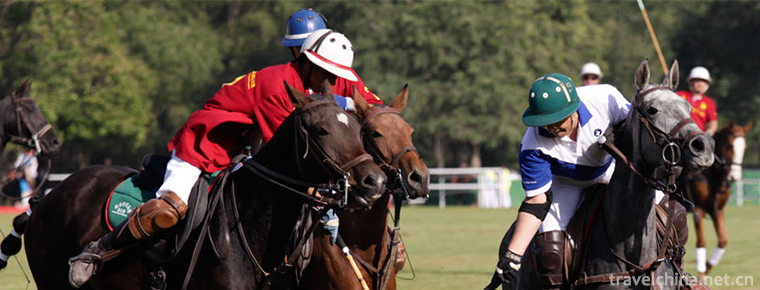
-
Online Shopping
Online shopping is to retrieve commodity information through the Internet, and send out shopping requests through electronic order forms, then fill in the number .
Views: 217 Time 2018-11-13 -
Xishuangbanna Primitive Forest Park
Xishuangbanna Primitive Forest Park, located in the east of Jinghong and north of Lancang River, is 8 kilometers away from the seat of the state capital..
Views: 168 Time 2019-02-25 -
Eight treasures duck
Babao duck is a characteristic traditional dish in Suzhou, which belongs to Shanghai cuisine and Su cuisine. But it is best cooked by the old restaurant in Shanghai, Town God's Temple.
Views: 202 Time 2019-03-27 -
Zamuni of Tibetan Nationality Playing and Singing
"Zamuni" is also called the Six Stringed Orchestra, a traditional Tibetan plucked instrument. Mainly spread in Lhasa, Shannan, Ali, Lazi (Bahir), Sakya, Angren, Dingri and other places.
Views: 116 Time 2019-04-15 -
Kazakh Aytes
Kazakh Aytes is a typical representative of Kazakh folk art, a competitive form of performance, is the most abundant content of Kazakh folk oral literature, the most influential literary type among th.
Views: 230 Time 2019-05-02 -
Dark pass
Dark pass Dark Biography, as the first Creation Epic of the Han nationality, is represented by folk songs and songs. It began to circulate in the Ming and Qing Dynasties. .
Views: 316 Time 2019-05-03 -
Kirgiz embroidery
Kirgiz embroidery is a traditional embroidery in Wensu County, Xinjiang Uygur Autonomous Region, China. Kirgiz women are good at embroidery. They embroider various delicate patterns on headscarves, pi.
Views: 279 Time 2019-05-09 -
Sun Tzu
Sun Wu (about 545 BC - about 470 BC), long Qing, late spring and autumn. Qi State Le An (today) Shandong ProvincePeople in the North 。 China's famous military strategist and statesman in the spring an.
Views: 191 Time 2019-09-04 -
Jianshan natural scenic spot
Jianshan scenic spot, located in the west gate of Zigong, Yandu city and rongbian town of Ziliujing District, is a provincial-level natural scenic area in Sichuan Province. .
Views: 349 Time 2020-10-15 -
Xiling Snow Mountain
Xiling Snow Mountain, located in Dayi County, Chengdu City, Sichuan Province, is only 95 kilometers away from Chengdu, with a total area of 483 square kilometers. It is a world natural heritage, giant panda habitat, AAAA tourist attraction and national key scenic spot..
Views: 321 Time 2020-11-06 -
Animal resources in Leshan
The composition of the wild fauna in Leshan City is located in the transitional zone between the Palaearctic realm and the Oriental realm. It is mainly composed of the southwest region and central China region of the Sino Indian subregion in the Oriental realm. .
Views: 335 Time 2020-12-17
